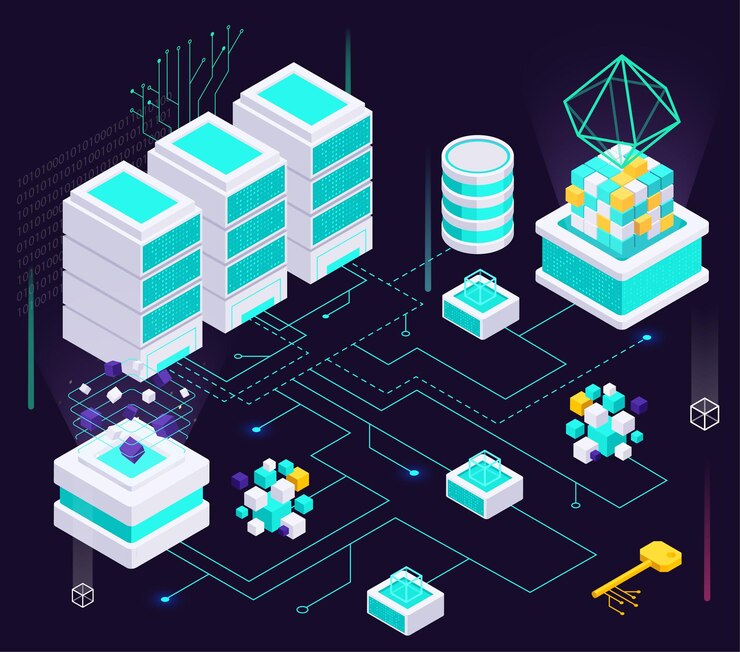How Microservices Architecture is Changing Website Development

In the evolving world of web development, creating scalable, maintainable, and flexible websites is more important than ever. Traditional monolithic architectures—where all functions of a website are tightly coupled into a single application—often struggle to keep up with the demands of modern businesses. As a result, more development teams are turning to microservices architecture, a modular approach that is reshaping how websites and web applications are built and managed.
In this article, we’ll explore what microservices architecture is, how it differs from traditional development models, and why it’s becoming the go-to strategy for building scalable, flexible websites. We’ll also look at a practical use case to demonstrate how microservices make it easier to update, scale, and maintain websites in today’s dynamic digital environment.

What is Microservices Architecture?
Microservices architecture is an approach to building software applications as a collection of small, independent services, each responsible for a specific function. These services communicate with each other via lightweight APIs and can be developed, deployed, and scaled independently.
Instead of building a single, large codebase where every function (user login, shopping cart, content management, etc.) is intertwined, microservices allow each feature to be separated into a self-contained module, often managed by a dedicated team. These services can be written in different programming languages, use different databases, and run on different servers—yet still work together seamlessly.
Monolith vs. Microservices: What’s the Difference?
A monolithic architecture is when all parts of a web application are built and deployed as a single unit. While it's simple to start with, making changes or scaling can be challenging since everything is tightly connected.
In contrast, microservices architecture breaks the application into smaller, independent services. Each service handles a specific function and can be developed, deployed, and scaled separately. This makes the system more flexible, easier to maintain, and better suited for growing or complex applications.
Use Case: Scalable Website with Microservices Architecture
Let’s imagine a fast-growing online marketplace. The platform allows users to browse products, read reviews, make purchases, and track orders. Initially, it was built as a monolithic application. But as the platform scaled, the development team faced multiple challenges:
-
Updating the order system required deploying the entire application.
-
A small bug in the review module caused a crash in unrelated parts of the site.
-
Scaling the product catalog meant scaling the entire app, including features that didn’t need additional resources.
To address these issues, the team restructured the platform using microservices. Each major function—user accounts, product catalog, shopping cart, payments, reviews, and order tracking—was transformed into an independent microservice.
Result:
-
Updates to the review system no longer affected the checkout process.
-
The payment service could scale independently to handle high transaction volumes.
-
New features, like a wishlist, could be added as a new service without touching the existing codebase.
Key Advantages of Microservices Architecture
1. Scalability
One of the biggest advantages of microservices is independent scaling. If your website experiences high traffic in one area—such as the search function or payment processing—you can scale just that microservice without increasing the resources for the entire application.
Benefit: Saves server costs and ensures optimal performance where it matters most.
2. Faster Development and Deployment
Because services are loosely coupled, development teams can work on different features simultaneously without stepping on each other’s toes. Each service can be built, tested, and deployed independently, enabling faster release cycles and continuous delivery.
Benefit: Reduced time-to-market for new features and updates.
3. Easier Maintenance and Debugging
In a monolithic application, a bug in one area can affect the entire system. In a microservices environment, problems are isolated to specific services, making them easier to identify and resolve.
Benefit: Improved system stability and easier troubleshooting.
4. Technology Flexibility
Microservices allow each service to be developed in the language or framework that best fits its needs. For example, a real-time chat service might use Node.js, while the payment module could be built with Java.
Benefit: Teams can choose the best tools for each job without being locked into a single stack.
5. Resilience and Fault Isolation
With microservices, if one service fails (e.g., the reviews module), the rest of the application can continue functioning. In contrast, a single failure in a monolithic application can crash the whole site.
Benefit: Better user experience and uptime.
6. Easier Integration with Third-Party Services
Microservices can communicate via APIs, making it simple to integrate external tools like payment gateways, authentication providers, or analytics services.
Benefit: More flexibility and expandability for your platform.
Challenges to Consider
While microservices offer many benefits, they also come with some challenges that need careful planning:
-
Complex Infrastructure: Managing multiple services can increase system complexity.
- Communication Overhead: Services need to communicate over the network, which can introduce latency or failures.
- Monitoring and Debugging: Tracking issues across distributed systems requires sophisticated monitoring tools.
- Deployment Complexity: You’ll need CI/CD pipelines and container orchestration tools like Docker and Kubernetes to manage deployments effectively.
Best Practices for Implementing Microservices in Web Development
-
Start Small
Don’t try to break your application into dozens of microservices right away. Begin with key features that need to scale independently. -
Define Clear Boundaries
Each microservice should have a clear responsibility. Avoid overlapping features that can cause confusion and maintenance issues. -
Use API Gateways
Simplify communication between services and clients using an API gateway, which can handle routing, authentication, and rate limiting. -
Invest in Monitoring Tools
Use tools like Prometheus, Grafana, or ELK stack to monitor and visualize the health of each microservice. -
Implement Strong DevOps Practices
CI/CD pipelines, automated testing, and containerization tools are essential for managing microservices at scale.
Tools That Support Microservices Architecture
-
Docker – Containerization tool that allows you to package each microservice with its own dependencies.
-
Kubernetes – Container orchestration platform to manage deployment, scaling, and availability.
-
NGINX / API Gateway – To manage traffic between services and the outside world.
-
gRPC / REST APIs – For efficient communication between services.
-
Service Meshes (e.g., Istio) – To manage service-to-service communication, security, and observability.
Conclusion:
Microservices architecture is changing the game in website development. By breaking down a website into smaller, manageable components, development teams can deliver features faster, scale services independently, and reduce maintenance headaches.
For growing businesses and complex web platforms, moving to a microservices architecture isn't just an option—it’s a strategic necessity. While it may introduce some operational challenges, the long-term benefits in scalability, flexibility, and agility are substantial.
If your team is building a scalable web application and wants to future-proof your technology stack, now is the time to explore how microservices can transform your approach to development. From startups to enterprises, embracing modularity and decentralization can unlock a new level of performance and innovation on the web.


Subscribe to follow product news, latest in technology, solutions, and updates
Other articles for you



Let’s build digital products that are simply awesome !
We will get back to you within 24 hours!Go to contact us Please tell us your ideas.
Please tell us your ideas.







